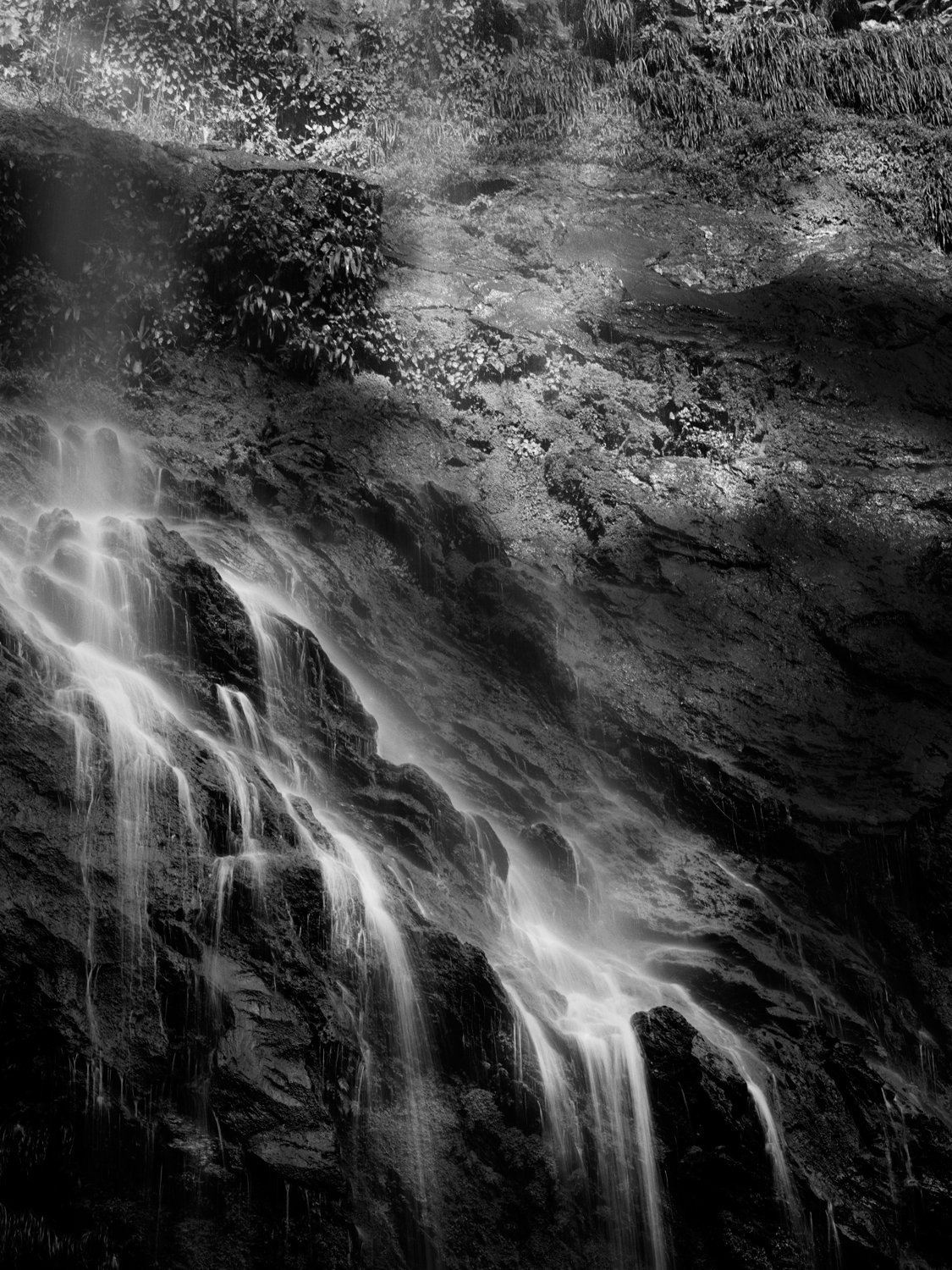Gigi Gatewood, "Maracas"
Archival Inkjet Print on Hahnemuhle Matte Paper, 13”x 16", 2022.
SHIPPING IS NOT INCLUDED. PLEASE CONTACT INFO@COLLARWORKS.ORG FOR A SHIPPING ESTIMATE.
BIO
Gigi Gatewood is an artist born in Buffalo and based in Red Hook, NY. Gatewood’s interest in the history of objects, the power of belief, and the ways in which we reckon with the unknown are evident throughout her projects whether they be lensbased, sculptural or performative. After receiving an MFA from the Rhode Island School of Design, she began a decade long project in Trinidad and Tobago as a William J. Fulbright Fellow researching and photographing the islands’ complex spiritual landscape. Her work has been included in exhibitions at Invisible Exports, Aperture Gallery, and the Chelsea Art Museum in NYC; Carrol and Sons in Boston, MA; David Cunningham Projects, Krowswork Gallery and Femina Potens Gallery in San Francisco; the Albright Knox Art Gallery in Buffalo; and the Katherine E. Nash Gallery in Minneapolis. Gatewood participated in artist collaborative video and performance projects at the 2009 Venice Biennale and the 2003 Havana Biennial. Gatewood currently teaches at Siena College in Albany.
STATEMENT
Power, artifacts, and politics of belief has been the focus of my work over the past decade. In 2011, I moved to the islands of Trinidad and Tobago, a place abundant with diverse and syncretic faiths. Since then, I have been collaborating with spiritual workers of the stigmatized and marginalized belief systems known as Orisha, Shouter Baptist, Kabbalah, Shakti, Rastafari and Carib. During this time, the Granger family in Moruga who left the Seventh Day Adventist church to tend the land and build community without religion contributed an essential part to this work. Images made with the family confirmed my understanding that secular objects and spaces not intended for worship have the capacity to hold just as much meaning. This series is not meant to serve as straight documentation or to tell one linear story, but rather to feel how the objects, places, and people of the Trinbagonian landscape communicate spirit.
Archival Inkjet Print on Hahnemuhle Matte Paper, 13”x 16", 2022.
SHIPPING IS NOT INCLUDED. PLEASE CONTACT INFO@COLLARWORKS.ORG FOR A SHIPPING ESTIMATE.
BIO
Gigi Gatewood is an artist born in Buffalo and based in Red Hook, NY. Gatewood’s interest in the history of objects, the power of belief, and the ways in which we reckon with the unknown are evident throughout her projects whether they be lensbased, sculptural or performative. After receiving an MFA from the Rhode Island School of Design, she began a decade long project in Trinidad and Tobago as a William J. Fulbright Fellow researching and photographing the islands’ complex spiritual landscape. Her work has been included in exhibitions at Invisible Exports, Aperture Gallery, and the Chelsea Art Museum in NYC; Carrol and Sons in Boston, MA; David Cunningham Projects, Krowswork Gallery and Femina Potens Gallery in San Francisco; the Albright Knox Art Gallery in Buffalo; and the Katherine E. Nash Gallery in Minneapolis. Gatewood participated in artist collaborative video and performance projects at the 2009 Venice Biennale and the 2003 Havana Biennial. Gatewood currently teaches at Siena College in Albany.
STATEMENT
Power, artifacts, and politics of belief has been the focus of my work over the past decade. In 2011, I moved to the islands of Trinidad and Tobago, a place abundant with diverse and syncretic faiths. Since then, I have been collaborating with spiritual workers of the stigmatized and marginalized belief systems known as Orisha, Shouter Baptist, Kabbalah, Shakti, Rastafari and Carib. During this time, the Granger family in Moruga who left the Seventh Day Adventist church to tend the land and build community without religion contributed an essential part to this work. Images made with the family confirmed my understanding that secular objects and spaces not intended for worship have the capacity to hold just as much meaning. This series is not meant to serve as straight documentation or to tell one linear story, but rather to feel how the objects, places, and people of the Trinbagonian landscape communicate spirit.
Archival Inkjet Print on Hahnemuhle Matte Paper, 13”x 16", 2022.
SHIPPING IS NOT INCLUDED. PLEASE CONTACT INFO@COLLARWORKS.ORG FOR A SHIPPING ESTIMATE.
BIO
Gigi Gatewood is an artist born in Buffalo and based in Red Hook, NY. Gatewood’s interest in the history of objects, the power of belief, and the ways in which we reckon with the unknown are evident throughout her projects whether they be lensbased, sculptural or performative. After receiving an MFA from the Rhode Island School of Design, she began a decade long project in Trinidad and Tobago as a William J. Fulbright Fellow researching and photographing the islands’ complex spiritual landscape. Her work has been included in exhibitions at Invisible Exports, Aperture Gallery, and the Chelsea Art Museum in NYC; Carrol and Sons in Boston, MA; David Cunningham Projects, Krowswork Gallery and Femina Potens Gallery in San Francisco; the Albright Knox Art Gallery in Buffalo; and the Katherine E. Nash Gallery in Minneapolis. Gatewood participated in artist collaborative video and performance projects at the 2009 Venice Biennale and the 2003 Havana Biennial. Gatewood currently teaches at Siena College in Albany.
STATEMENT
Power, artifacts, and politics of belief has been the focus of my work over the past decade. In 2011, I moved to the islands of Trinidad and Tobago, a place abundant with diverse and syncretic faiths. Since then, I have been collaborating with spiritual workers of the stigmatized and marginalized belief systems known as Orisha, Shouter Baptist, Kabbalah, Shakti, Rastafari and Carib. During this time, the Granger family in Moruga who left the Seventh Day Adventist church to tend the land and build community without religion contributed an essential part to this work. Images made with the family confirmed my understanding that secular objects and spaces not intended for worship have the capacity to hold just as much meaning. This series is not meant to serve as straight documentation or to tell one linear story, but rather to feel how the objects, places, and people of the Trinbagonian landscape communicate spirit.

